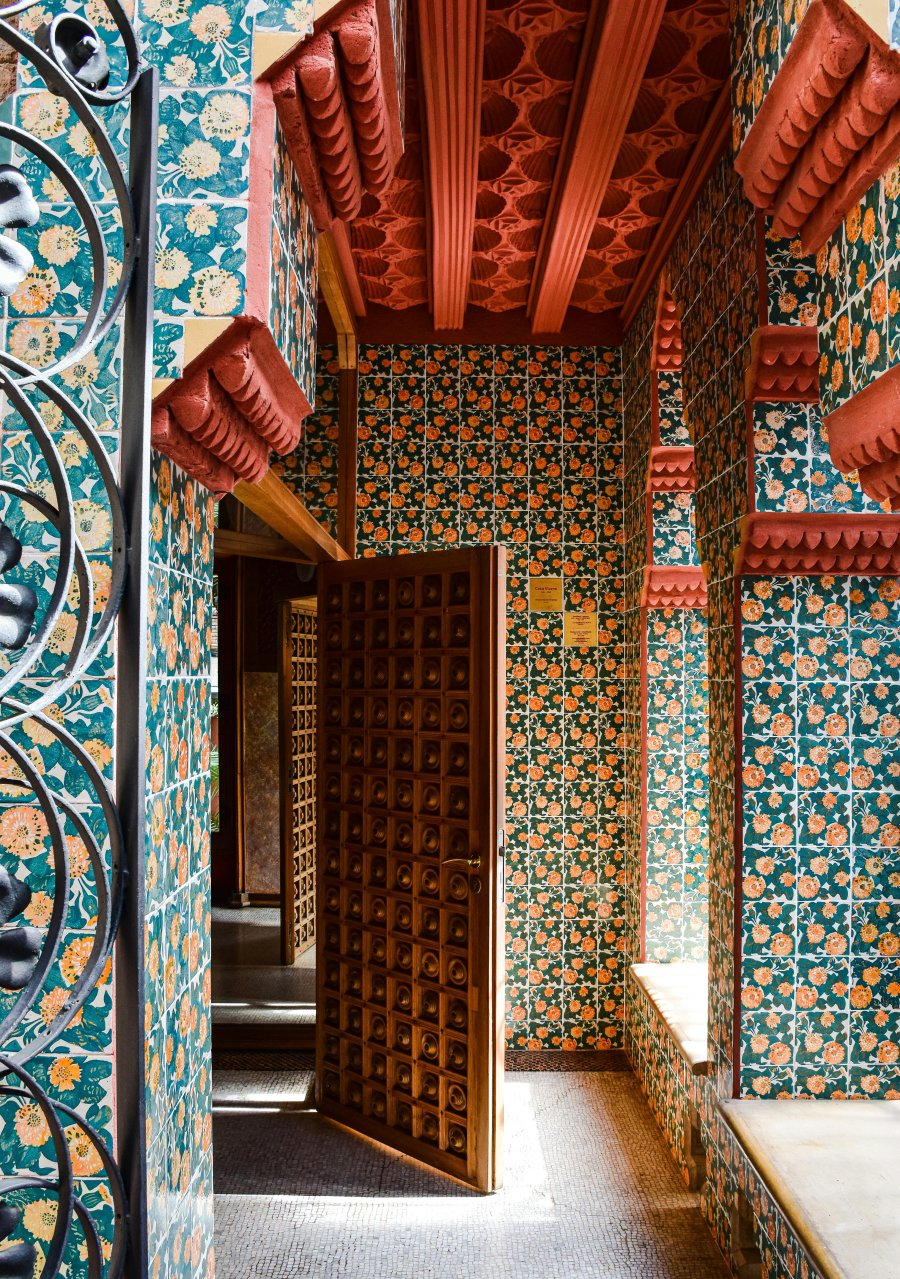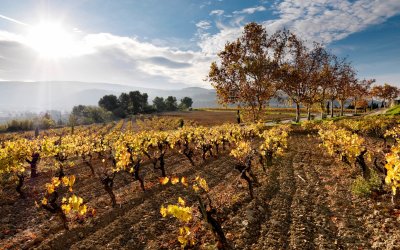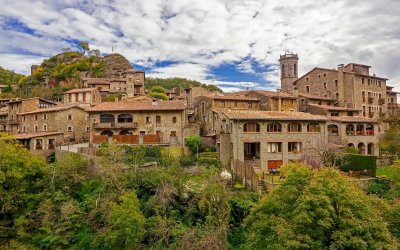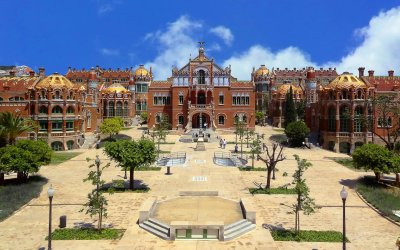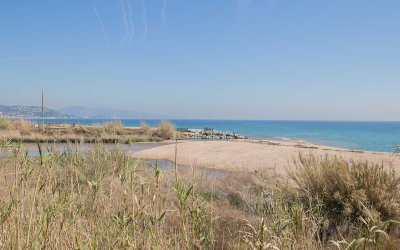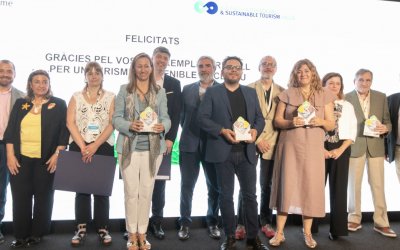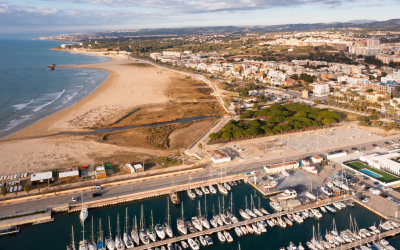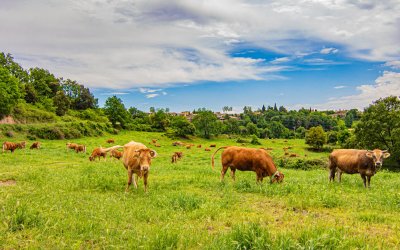The city of Barcelona is one of the most important and highly-rated tourist destinations in the world. It's also one of the ones with the strongest commitment to sustainability. Its main attractions include the works of Antoni Gaudí, true architectural wonders whose unique beauty captivates people from around the world.
Today, many of these buildings have become museums which not only conserve and share this heritage but also strive to generate a positive impact in the city, minimise their ecological footprint and make Gaudí’s legacy accessible to everyone.
Come with us on this tour around Gaudí's more sustainable Barcelona with the architect's works that have joined the Destination Barcelona Commitment to Sustainable Tourism.
1. Casa Vicens
Located in the quiet neighbourhood of Gràcia, Casa Vicens was Gaudí’s first work in Barcelona. With its oriental and Mudejar style and spectacular green and white tile roof, it is one of the first examples of Modernisme, or Art Nouveau, in Europe from the late nineteenth century.
Casa Vicens offers a thorough, attractive tour for all audiences, with a permanent exhibition and a route through Gaudí's original rooms, which have been painstakingly conserved and restored. It also offers special activities, like touring the house as you savour artisan ice cream crafted in the Gràcia neighbourhood, an early-bird tour before it opens to the public to enjoy it quietly with a different sort of light, and an olfactory tour where you can discover the scents of nature that inspired Gaudí to create this work.
With close ties to the neighbourhood and the local community, Casa Vicens implemented measures to reduce the impact of its activity on the environment since it opened as a house museum in 2017, such as refraining from occupying public space and mitigating noise pollution, among other measures. It is accessible to people with reduced mobility and organises special tours for groups in a vulnerable situation.
2. Palau Güell
Palau Güell is another must-see from Gaudí's early works, which is essential to understanding his architecture, given that it contains his full essence and the defining features of his subsequent works. This urban palace, built with an array of luxurious details, was the architect's first commission from Eusebi Güell, for whom he would eventually build the iconic Park Güell. Despite its apparently sober exterior, the palace is astonishing for its opulent interior. But hands down, the most noteworthy features are the fireplaces decorated with trencadís and the building's entrance featuring masterful wrought iron brimming with symbolism.
Discovering this treasure, which is surprisingly off the beaten path, is an incredible experience thanks to activities like a treasure hunt for the whole family or a guided tour through some of the secret areas that are usually closed to the public, like entering Eusebi Güell’s office or listening to the palace’s organ. You will also find different exhibitions there, and they hold open days when admission is free.
To make sure that everyone can experience this building's magnificence, the Palau Güell is firmly committed to accessibility and offers visitors specialised support and welcome services for people with special needs. For example, it offers video guides in sign language, audio guides with audio descriptions for people with visual impairments, a sound amplification system, maps in relief and adapted guided tours.
3. Torre Bellesguard
In this spot nestled at the foot of Collserola mountains, you can learn about one of Gaudí's most architecturally complex works while also taking a stroll through Catalonia's history. The land where the house was built used to be the royal residence of Martin the Humane, the king of the Crown of Aragon, and remains of the fifteenth-century castle and walls still survive. Drawing inspiration from this past, the architect designed a complex that stands out for its stark verticality and solutions resembling Gothic architecture, albeit with his unique hallmark.
The site’s most distinctive feature is unquestionably its location, which lets you discover it calmly, with no crowds, just surrounded by nature and silence. The historical rigour of the tours and the commitment to disseminating the heritage are other noteworthy hallmarks. Indeed, another of Torre Bellesguard's goals is to promote research with its multidisciplinary research team to better understand this work, the history of the property and Gaudí’s brilliance. It is also committed to culture and creativity by supporting initiatives like the Festival Estrenes Bellesguard and to solidarity by partnering with various local NGOs.
4. Casa Batlló
From the quiet retreat of Bellesguard, we return to the hustle and bustle of the city centre with one of Gaudí's most famous works with the most visitors. Casa Batlló hardly needs an introduction; everyone recognises its iconic façade bursting with colour. But a tour inside it also harbours plenty of surprises.
Through innovative immersive rooms, Casa Batlló offers a totally different journey through Gaudí's mind. New technological installations, augmented reality experiences and partnerships with designers and artists will enable you to rediscover this work and the artist’s creative process like never before. You can also have fun with your family in an outdoor escape room, where the setting is Modernista Barcelona, or enjoy the unique experience of a concert under the city's night sky.
These efforts to innovate in the way Gaudí's legacy is shared, in addition to its conservation and research efforts and its close partnerships with local artists and artisans, earned Casa Batlló the Barcelona Sustainable Tourism award in 2020. Casa Batlló is also a pioneer in accessibility, as the first cultural organisation internationally that has a team of neurodivergent individuals to assist visitors who need them.
In conclusion, these four Gaudí works are not only prime examples of Modernisme but also benchmarks in sustainability and accessibility. Visiting them means immersing yourself in a wide variety of experiences while supporting organisations committed to the well-being of Barcelona and its residents.

